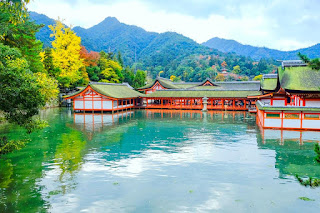Kouri Island Okinawa ,Japan

Kouri Island is a circular island with a radius of about 1 km, located at the northeast of the main island’s Motobu Peninsula. This small island is surrounded by emerald green seas. With the opening of Kouri Bridge between Kouri Island and Yagaji Island in Nago in 2005, this outlying island became accessible by car. Kouri Island has a circumference of about 8 km. There is a road that goes all the way around the island. It takes about 10 minutes to go all the way around by car. In the summer, you can enjoy activities like swimming and snorkeling at locations including: Kouri Beach which is located at a root of Kouri Bridge, Tinu Beach, famed for its Heart Rock and Tokei Beach which features a giant’s kettle (a circular cavity in large rocks on the beach). Additionally, you can enjoy a view of Kouri Bridge from the observation deck at Kouri Ocean Tower which stands 82 meters above sea level. Access to Kouri Island Kou...
